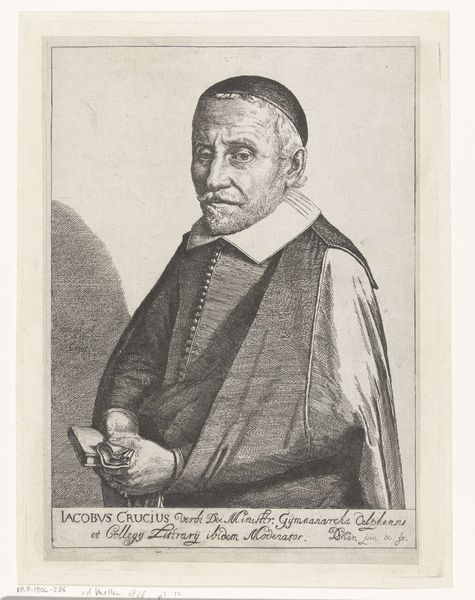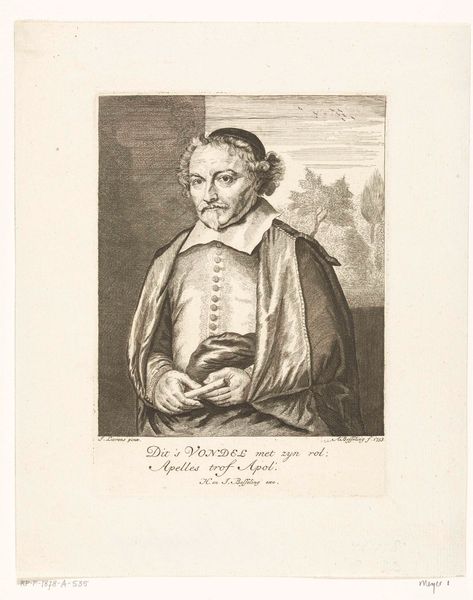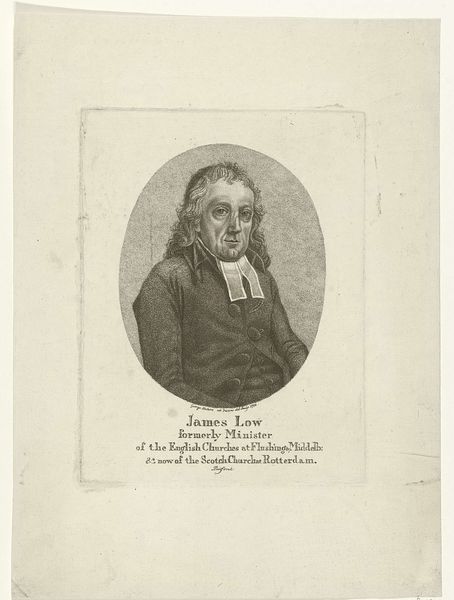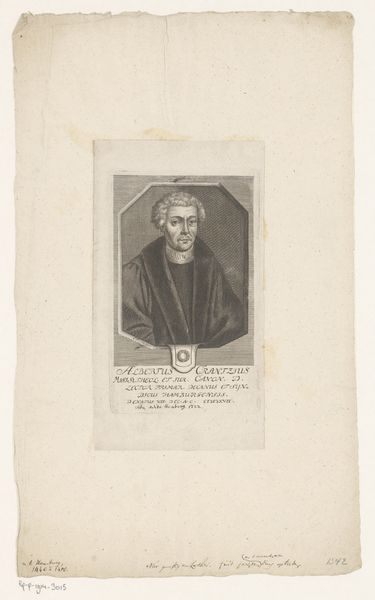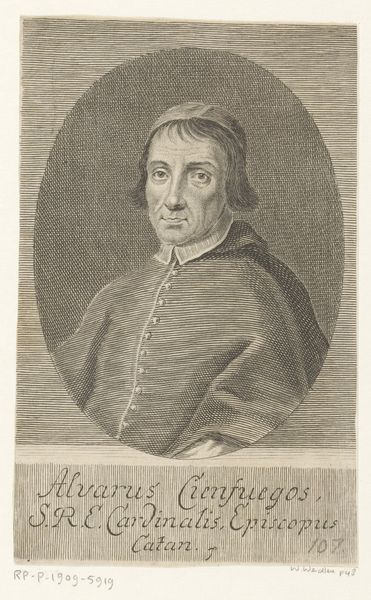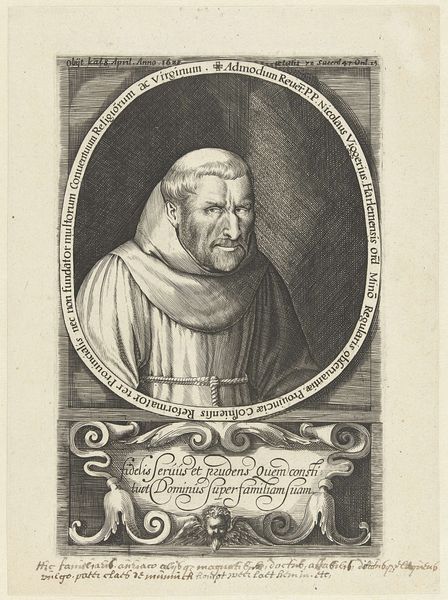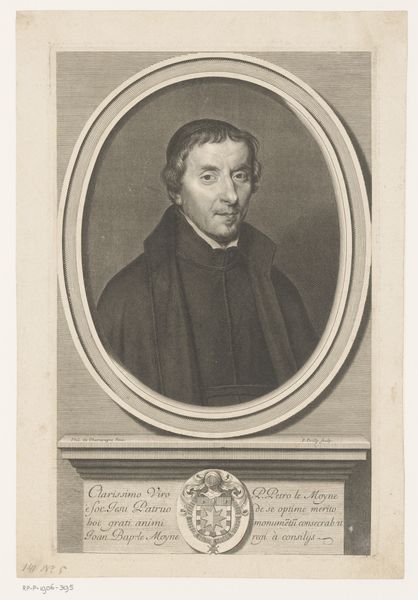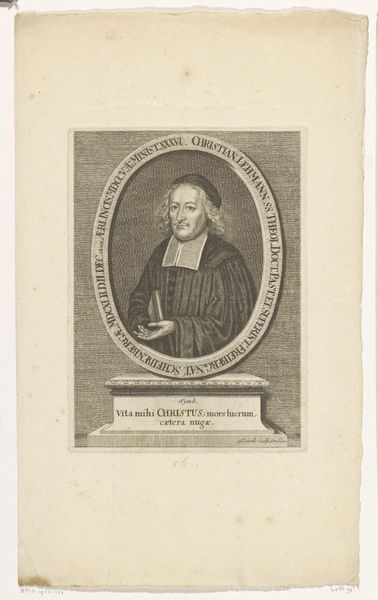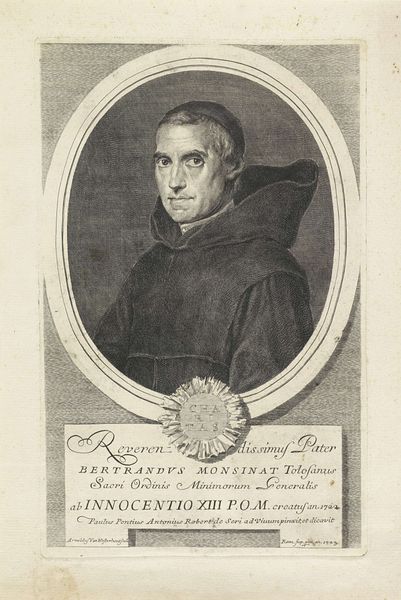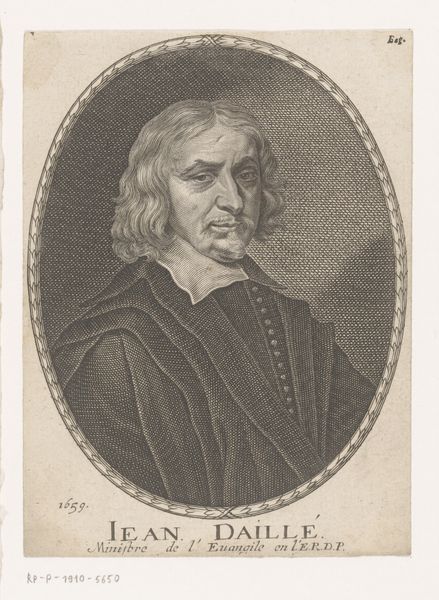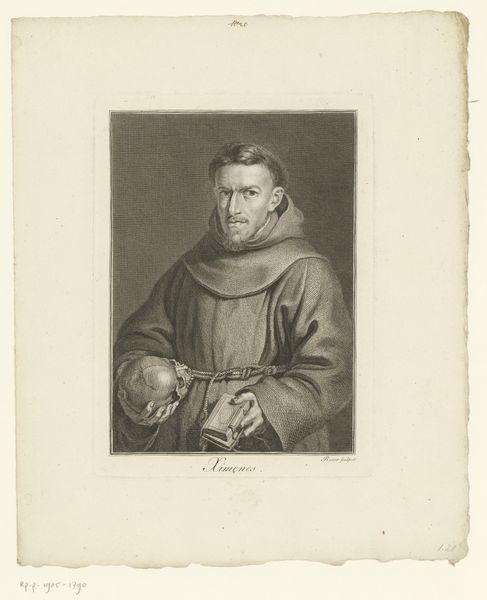
print, engraving
#
portrait
#
aged paper
# print
#
old engraving style
#
19th century
#
history-painting
#
engraving
#
realism
Dimensions: height 135 mm, width 103 mm
Copyright: Rijks Museum: Open Domain
Curator: Before us is a print entitled "Portret van Joannes Stafford," made sometime between 1798 and 1837, attributed to Ernst Willem Jan Bagelaar. It’s an engraving, characteristic of its time. Editor: My first thought is severity. The monochromatic palette, the tight oval framing... it creates a somewhat austere, solemn impression. Curator: Indeed. Consider the historical context. Portraiture, particularly in print, served a crucial function. It disseminated images of influential figures, shaping public memory. Stafford, with his priestly attire and that crucifix behind him, clearly signals religious authority. Editor: And note the book in his hand. A symbol of knowledge, piety, and perhaps the very words he preached. Books in portraits often denote erudition and social standing. The hand holding it seems both firm and slightly trembling... Curator: That's fascinating. We see this emphasis on realism reflected across a range of engravings from this era. While idealization had its place, this pursuit of capturing a likeness, complete with what could be age or even frailty, signals a shifting cultural attitude towards representation. The inscription beneath, providing his age and date of passing, only reinforces this feeling. It places Stafford within the broader scope of historical narrative. Editor: It makes me think of memory—how images work to fix a person in time, and to represent what society valued. That small crucifix on the table whispers volumes, anchoring him within a specific faith tradition. His hair is styled so formally yet there is loose curly volume too! He’s dressed modestly but it looks to be quality fabric, indicative of social and monetary success. Curator: It's a carefully constructed image, undeniably. The symbols combine to present a man of God, learning and gravitas. However the distribution would depend on networks within Dutch society. Prints like this also served didactic purposes and political ends as well as for broader consumption. Editor: Looking closer, I think the power here is in its quietness. He is not posed heroically, nor lost to ostentation, but with symbols to understand and to connect him. Curator: I agree, and the subtle details are perhaps why this seemingly simple print invites such prolonged reflection.
Comments
No comments
Be the first to comment and join the conversation on the ultimate creative platform.


